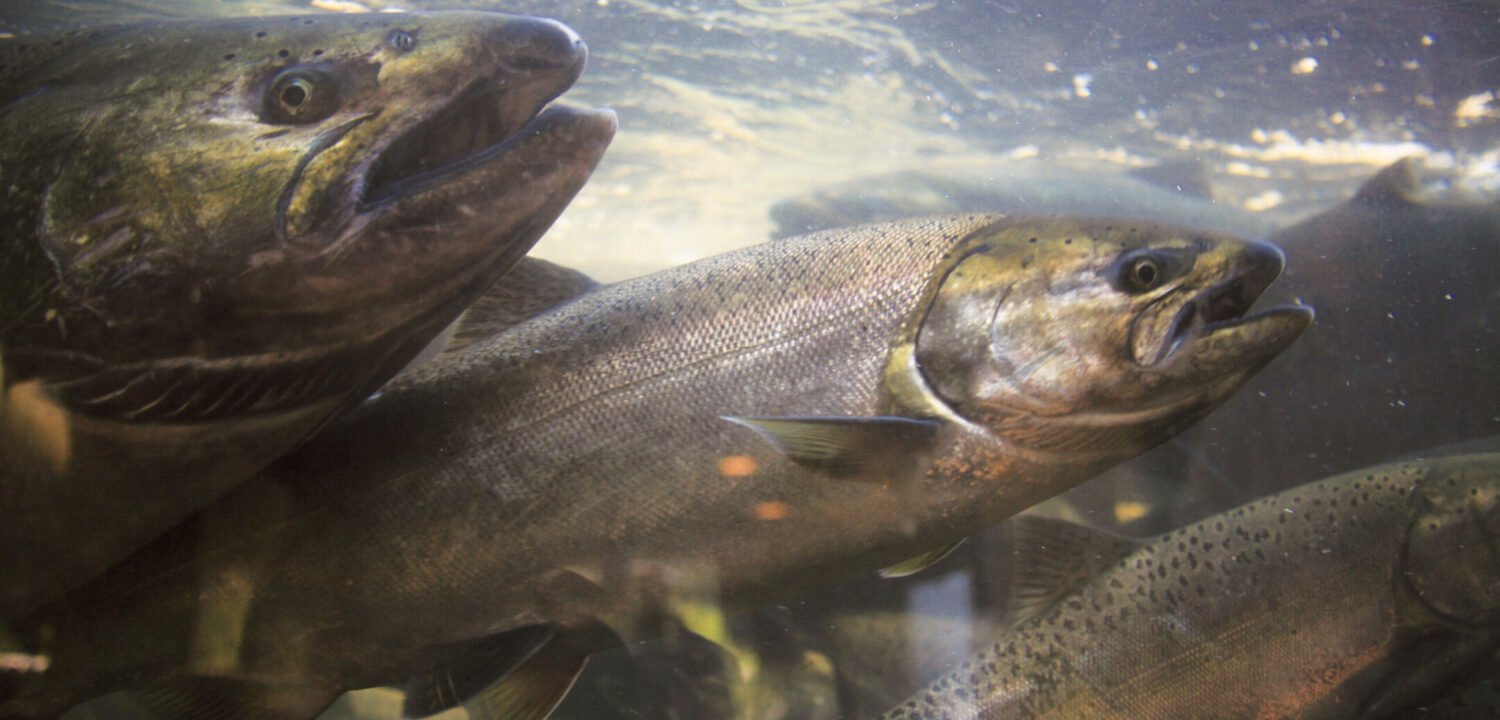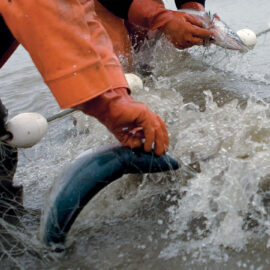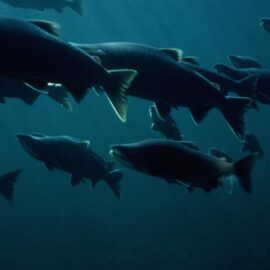Updated 3/12/19: The environmental risks of genetically modified salmon, and why you should care.
Should I eat GMO salmon?
Wild Salmon Center does not take a position on the personal health risks and the labeling of GMO food. (The World Health Organization, American Medical Association and the National Academy of Sciences have all determined that GMO food is not hazardous to human health.) However, Wild Salmon Center is concerned about the environmental risks of genetically modified salmon, if they escape into the wild.
Won’t the new AquaAdvantage salmon be raised indoors?
Yes, the AquaAdvantage fish originally approved for sale in 2015 by the Food and Drug Administration was to be raised in indoor facilities overseas, with little risk to wild fish. In 2019, FDA opened to door for AquaBounty to raise the salmon in land-based tanks in Indiana.
So why are you worried?
Farmed fish have escaped from open-net fish farms in bays, and then interbred with wild fish. GMO salmon allowed on these farms in the future would present a danger to wild salmon, because these new fish could mate with wild fish and dangerously reduce the genetic diversity and fitness of wild fish populations. We need to monitor this situation closely and prevent introduction of GMO fish to open-net fish farms.
Isn’t the fish farming industry improving?
British Columbia and the state of Washington’s plans to phase out some ocean net-pen salmon farming will help wild fish and marine ecosystems. The Aquaculture Stewardship Council standards program and the use of land-based fish farms also represent positive developments. These will help contribute to responsibly raised protein to feed the world. But the fish farming industry still has a ways to go to prevent harmful impacts on wild fish, including the introduction of disease and pollution into wild salmon ecosystems.
Why are you so concerned about protecting wild salmon?
Healthy wild salmon populations are central to life around the Pacific Rim.
If we want healthy salmon ecosystems around for the future, we need wild salmon. Because of their diverse genetic makeup, wild salmon are better equipped than captive-raised salmon to adapt and survive in the face of industrial development and climate change.
They serve as a vital source of food and nutrients in the North Pacific — over 130 species, from caddis flies to bears, depend on returning salmon.
Wild salmon fuel a multi-billion dollar fishing industry in the Pacific.
Wild salmon are a charismatic species that define social and cultural life for native people and fishing communities around the Pacific.
So, should I eat wild salmon?
Yes, but make sure it’s from a reputable source. Wild Salmon Center has put together a guide to carefully selecting the right salmon to eat. Check out “What Salmon Should I Eat?“




